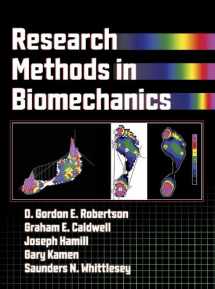
Research Methods in Biomechanics
Book details
Summary
Description
This text provides a firm foundation in the biomechanical methods and tools necessary for quantifying human movements. Research Methods in Biomechanics is an invaluable resource for developing and seasoned researchers wishing to hone their skills and learn new techniques in the collection, analysis, and interpretation of data.
The reference shows how the laws of motion are applied to complex human movements. The text demonstrates how to combine segments to obtain limb or total-body measures. All the material is presented in such a way that you need only basic knowledge of Newtonian mechanics and vector algebra to benefit.
The easy-to-navigate book is organized into 11 chapters and three parts. Part 1 describes the kinematics of motion using 2- and 3-D analyses. Part 2 considers the kinetics of motion with respect to quantifying forces, work, impulse, and power. Both 2- and 3-D analyses are again provided, as well as methods to directly and indirectly measure forces. Part 3 examines numerous additional techniques to quantify motion, including electromyography, muscle modeling, and computer simulation.
Research Methods in Biomechanics contains extensive tables, reference materials, and other features that will enhance your understanding of the material:
-Each chapter begins with objectives that enable you to quickly access different topics.
-Exercises appear throughout the text, allowing you to test your skills.
-Key terms are highlighted and defined in a handy glossary.
-Current studies from scholarly journals are analyzed to demonstrate how different methods and techniques apply in actual research experiments.
-Suggested readings provide direction for deeper study.
This text will help you test your skills in using a variety of research methods and apply the requirements and steps necessary for valid data collection. It is a must-have for biomechanics professionals, researchers, and students.


We would LOVE it if you could help us and other readers by reviewing the book
Book review




